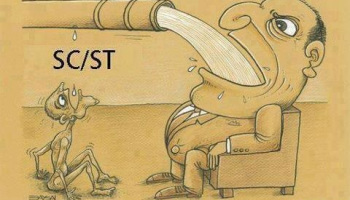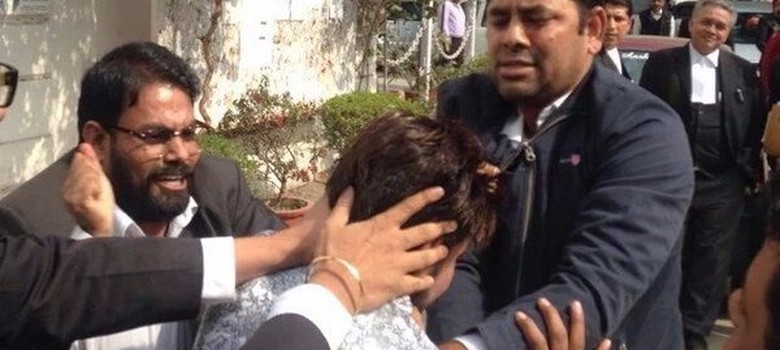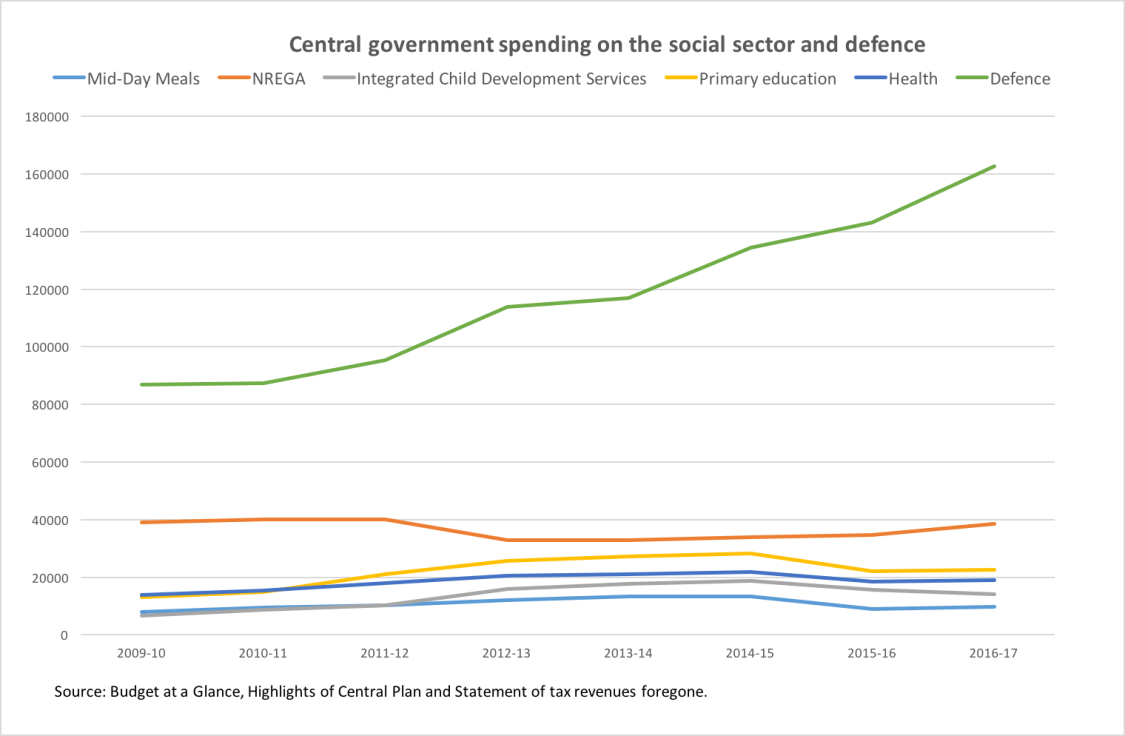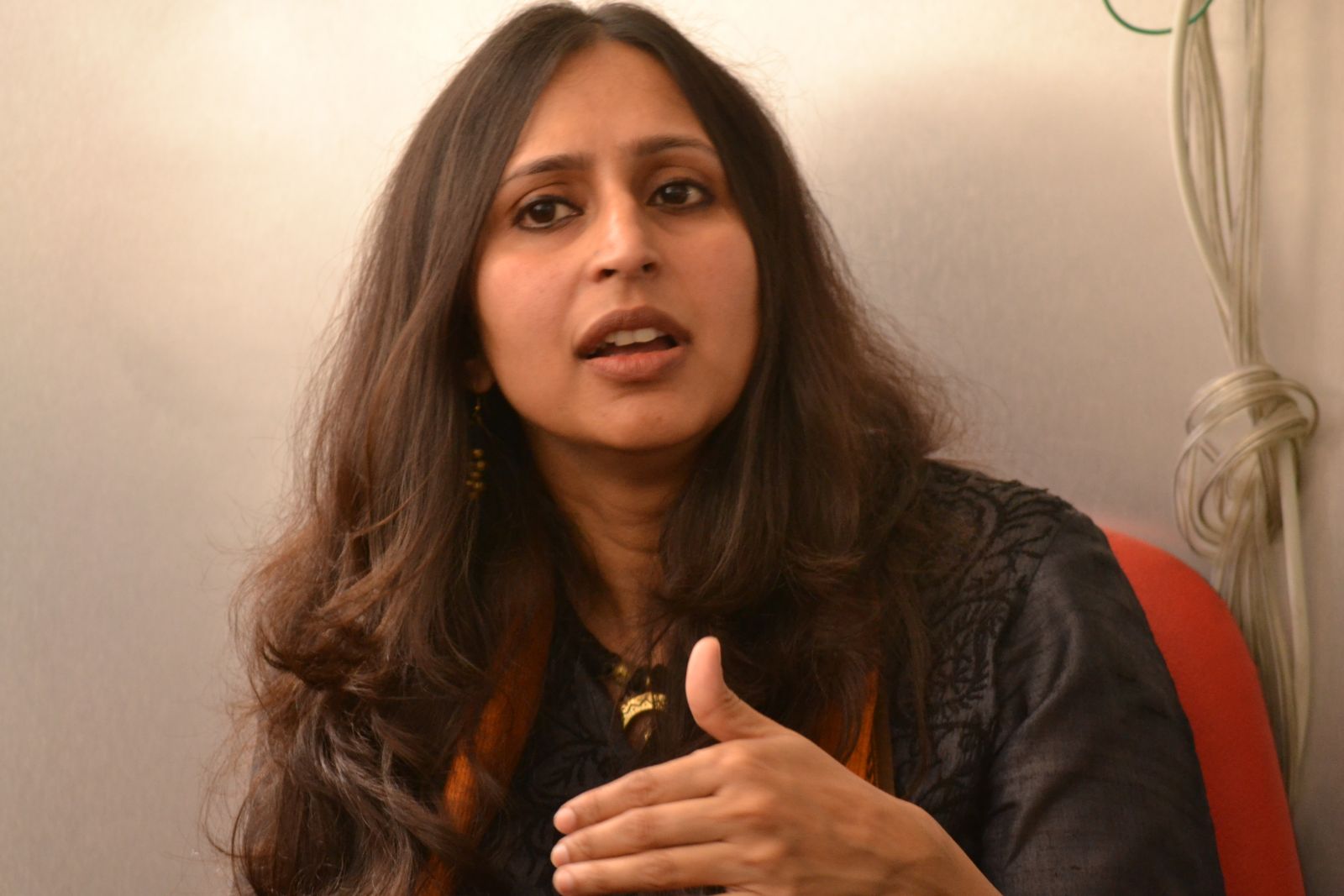With campuses across India in a ferment, and students and teachers defying the RSS-directed BJP government's bid to silence the dissenting voice as the back drop, a professor writes to his students on the eve of their graduation

Dear standing-on-threshold-of-history-making-&-fork-on-road-of-life Student,
I am writing this note since it is probably a time in your life when things are either very confusing, even-more-than-normal anxiety-producing, maybe even terrifying or just plain numbing. As you move closer to graduating and re-joining the world from which you perhaps only took a break, in order to catch your breath or gain some perspective or rejuvenate yourselves, the future itself may, ironically, seem quite incomprehensible or difficult to recognise and navigate.
I say this in the context of what many of you (hopefully all) will be considering in your own ways as the increasingly gloomy situation all around the country and the world even as you wonder about your own path and meaning-seeking amidst the fires around. Some of you have written to me about these things. Many of you may even be wondering why something like hope or meaningfulness – which are needed to live – are not easy to construct or come by.
My position as a teacher also has its own contradictions, paradoxes. On the one hand the task of a teacher is to speak truth to power, especially in such depressing times when – politically we are seeing the rise of fascism, economically it is becoming an oligarchy-in-the-making, socially we have forgotten how to relate to others as fellow human beings, ecologically we have ravaged the earth and other life forms, ideologically we have fashioned the most sophisticated ways of justifying all the above, and hence morally we have become (or are nearing) empty.
When I say, we, I refer to those who think and feel within the dominant modes of our times, the ones with the loudest voices, access to powerful media, bludgeoners of the vulnerable, self-proclaimed guardians (nay controllers and managers) of ‘righteous’ moralising, and ones whose ideas rule this epoch of history – i.e., the ruling elites.
The task of a teacher is to speak truth to power, especially in such depressing times when – politically we are seeing the rise of fascism, economically it is becoming an oligarchy-in-the-making, socially we have forgotten how to relate to others as fellow human beings, ecologically we have ravaged the earth and other life forms, ideologically we have fashioned the most sophisticated ways of justifying all the above, and hence morally we have become (or are nearing) empty.
As a teacher my commitment is to truth-telling and compassionate-living. I cannot tell lies to myself or to my students. Hence, my above characterisation of the society we live in and the world we all live in which strikes me as being largely true and validated by evidence. And I am not alone in this understanding of the world. Nevertheless, on the other hand, a teacher also needs to find a way to provide you, our students, and ourselves with hope. For only in hope does any possibility of a way out of this mess exist (remember: pessimism of intellect, optimism of will?).
What do I mean? So, how does hope come out of this?
Most people, unfortunately, choose to not view the world in the depressing way above. This is despite all evidence to the contrary. For them, somewhere in their hearts, has formed a principle by which they try to live; the principle goes something like – happiness in ignorance of the larger world, or worse, happiness with deliberate indifference to the larger world. For them, hope equals the hope that they and their family will do well compared to everyone else. Indeed, such a mode of existence is so common that almost everyone (including all of us) has lived some part of their lives in this mode.
I too lived about half my life in that mode. Thankfully, I grew out of it. So, it is not with any intent to condemn it that I present it thus; there is no point condemning an ideology that is so 'naturally' produced in such a world. For, it is not consciousness that determines our existence, it is our social existence that determines our consciousness (as said that radical student of the world a while ago). That social existence made me weary, and it is that kind of existence that one needs to be(come) wary about. All this is only to say that this is what we are up against – something that has acquired the prejudice of ‘commonsense’.
Such thinking and being is widespread but not omnipresent. Thankfully, such a way of existing does not exhaust humanity. At least not all, and not all the time. For there exist a second and third (and a fourth) set of people who allow ideas (love, truth, justice, social service, science, beauty, god, etc.) and social collectives much larger than families (e.g., nation, community) to shape their existence – become their reason to be and to live, to be their guiding ideals and their fund of hope.
For these folks, hope comes from living for such ideals – however crazy or impossible they maybe to others. To them, these are the reasons to live. Commonsense and ‘practical’ living is not attractive for such people. They ache for a better and a different world and are not content to make their lives in a world made by others.
Now, all kinds of ideologies come out of this second and third set. Fascist, communal, casteist, misogynist, plutocratic, oligarchic and nationalist supremacists of all hues drive people with such supra-family idea(l)s. So do socialist, communist, secular, feminist, Gandhian, Ambedkarite, anti-colonial nationalist, internationalist and progressive of all hues – although from a very different set of principles.
In a sense, both are cut from the same cloth – of wanting to work to change the world in the ways they see fit. Activism is their life breath; idealism is their motive force. They find a way to live amidst the ruins of the world they have set their hearts to repair, to heal and to transform in their own image. However, unlike the former, the latter, however flawed in practice, are bound to principles that are inclusive, humane, egalitarian and expansive in their abilities to imagine, include and bring together, rather than the exclusive, hate-filled and narrow-visioned former. And this distinction makes all the difference between the above two sets of people and the future they promise.
Somewhere in this above spectrum are some others who don’t quite ‘fit in’, ones that the world loves to call ‘dreamers’ who love and are moved so much by some ideas/ideals such as love, beauty, compassion, truth, justice, etc. that they continually live by delinking from the world. They are frequently part of one of the above two kinds of groups mentioned above; yet from time to time they are also its rejects. They need to delink, if only to refuel. Else they die (figuratively). These are also its prophets, its chief prognosticators, its truth-tellers. They foretell gloom and doom, but the best among them also imagine the way toward hope and love.
Each of you will be ‘addressed’ (or if you wish, ‘interpellated’ – a fancy term that does have its uses after all) by all the above groups of people. Each set will show their own path. Each path will beckon; each friend will choose; each choice will befriend (and yes, that term your generation has gifted to us all – ‘unfriend’ too); each moment will compel; each way to be will have your name on it.
How will you decide? What will you be my friend? What are you already? What can we be? Who are we becoming? What have we already become?
In many ways it is possible to think of a job as what one does while figuring out what is one’s calling. Both will come to those who seek. The latter (vocation/calling) will be the crucible in which your lives will retain meaning in a world that places profits (and power) over people and meaning.
These are the kinds of questions that we must have with us at all times. If you are trying to “make sense of yourself” and get a feeling of being “lost and troubled” from time to time on this journey, you are not alone. There are many others who feel like you. Hopefully more will feel like that. How else can we call ourselves as anything other than the ‘living dead’? To live and struggle to find an ethical life in the midst of a world which crushes all mention of it, is a challenge worth living (and dying) for. To find that star to follow, to listen to and make one’s music and dance at all times. Especially in dark times. As that playwright of our times said it in another dark time:
“In the dark times,
Will there also be singing?
Yes, there will also be singing,
About the dark times.”
I will be remiss if I do not say something about what I am sure all of you may be also grappling with – the issue of jobs and placement, as you prepare to graduate. You came to a place that perhaps attracted you through its ideals, its promise, its potential for nurture and its ability to challenge you to the core of your being. Where do jobs and that hyped-up term ‘career’ figure in this picture for you? They are to be viewed, in my opinion, given the state of the world, as no more than a way to stay alive in the most basic ways. In this sense they are livelihood mechanisms.
On the other hand, beyond jobs lies what many say is a ‘calling’ or a ‘vocation’. That demands a steadfastness of the heart, a commitment to viewing life in all its scary (yes it is) and gory (yes indeed) nakedness, and insisting that dreamers are part of this world, indeed they are its life-breath, its fragrance in an otherwise putrefying sink. In many ways it is possible to think of a job as what one does while figuring out what is one’s calling. Both will come to those who seek. The latter (vocation/calling) will be the crucible in which your lives will retain meaning in a world that places profits (and power) over people and meaning.
I have always admired your ability to think and feel things that most others have either given up on, or never bothered to. My best experience as a teacher has always been with students who hunger to learn and to be challenged to see things differently from what was commonsense. Most of you have also come having experienced struggles of different kinds in your own lives; you then plunged into a space and curriculum that demanded your attention, your allegiance, your spirit – if you have listened and engaged.
Some amongst you have written (or talked) about your need “to be able to think about other ways of existing”. Go find that calling. Remember, there is no option to not do anything. And, most of the times, it is the small things that one does with all the care, love and compassion that one can garner from the depths of one's heart, that matter the most. The world will change. It will have to change for the better. Find a way to survive and nurture yourself, so that others can also take heart from your being.
I know this has taken longer to pen than I had imagined. Letters are perhaps the kind of writing that I like the most. What can I say? So many letters have been my resting points in life when I am tired. The latest one that I am re-reading is by MLK [Martin Luther King] from Birmingham Jail (at what was probably one of the lowest points in terms of hope during his life) and you may remember the one by Bhagat Singh to Kultar that I had sent you all a year ago.
Read some history; someone else’s letter in dark times; some poetry; some prose; above all take care of yourself and the ones around you; notice the workings of power and privilege in your own context; know where your food and other things you use come from and how it was made and got to you; know that sharing and cooperating are our oldest survival mechanisms as humans; recognise stereotypes around you and refuse to laugh at a sexist, homophobic, racist, casteist, communal, ethnic or class-prejudiced joke; retain your sense of humor and relish the moment of silence; work with others who have preceded you on the same path but make it your own path and story; learn what solidarity and trust means by making mistakes and reaching out across and beyond your own comfort zone; eat and drink well but in moderation for we want you to live and change this world.
Be well and take heart. All is not lost. Indeed, you are living in a historical moment. Be alive. And yes, I am writing this as much for you and all my students as for me and my comrades. And yes, if some of you mention that you noticed something essentially missing in me on my last visit it may very well be the world that is eating us all away. Hopefully, I will be rejuvenated from time to time.
Murli
February 25, 2016
(The writer is associate professor, William Paterson University of New Jersey and visiting faculty, Azim Premji University. The above letter is addressed to his students at the university in Bengaluru).








